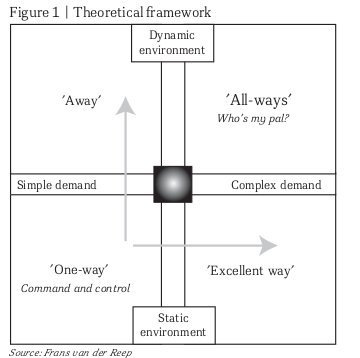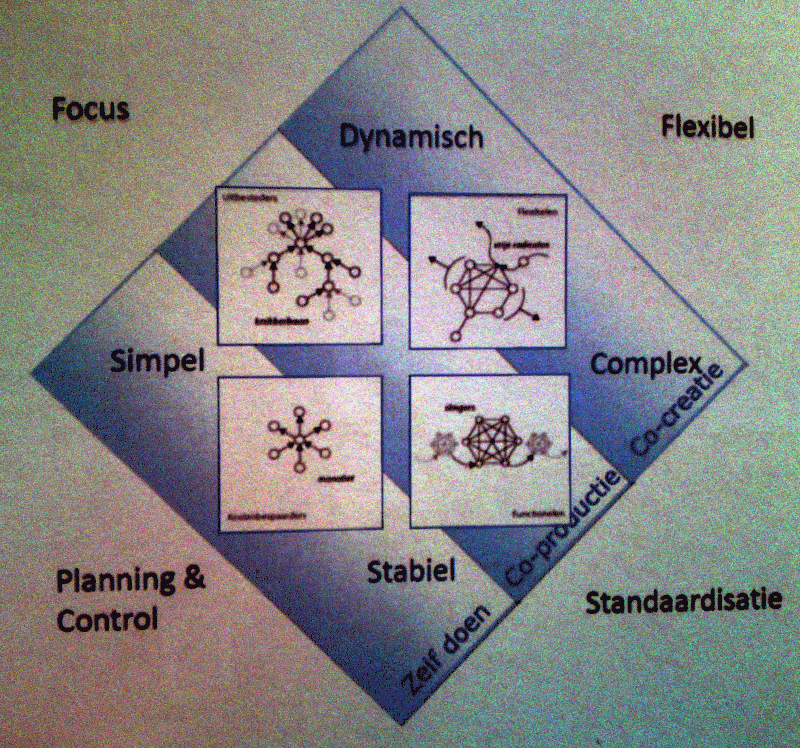In his research on cultural differentiation in multi-agent simulations, Verwaart (2011) concludes that an expert system approach is feasible for modeling these differentiations. Cultural differences as defined by Hofstede (2001) and the trust and tracing game (Meijer, 2009) set the base line. The cultural differences are dimensions of private-professional relations, hierarchy impact, cooperation-competition preference, xenophobia and virtues. The game is about explaining the impact of cultural intertwining differences in relatively simple context, with a focus on individual efficiency.
The field of application is a field area of outsourcing, and not an area of ‘free radicals’ and ‘functionals’, like my fields of interest. See the model of Van der Reep (2006) for the differences:

My basic interpretation of this model -of which I cannot find scientific evidence (yet)- is as follows:
| OUTSOURCERS | FREE RADICALS |
| MONOLITHS | FUNCTIONALS |

Further development on this model is done by Van Leeuwen (dutch: waardekompas, 2006), focussing on the necessary roles and relations in teamwork, within the context of strategy developments.
Focussing on a dynamic environment and simple demand, Verwaart validates his expert system approach using:
- Hofstedes model of Synthetic Cultures (emphasizing single dimensions),
- the principle of weak junction (the highest value of the effect of a set of dimensions is used as the resulting simultaneous effect),
- the principle of face validity (experts compare the tuned model to reality) and
- empirical reference (outcomes of game versus studies),
He is also aloof regarding the conclusions:
A problematic issue is, that similarity of the outputs of gaming simulations and multi-agent simulations is no sound proof that the agent correctly implements the human decision making mechanism. This issue is known as under-determination. A validation method is proposed, which builds on the model’s composed structure. Under-determination can be avoided by separate validation of the components in micro-games.
All in all, the two most interesting aspects -to me- are that:
- Verwaart is combining different approaches: Multi-agent simulation (parallel approach) to demonstrate how tuning of cultural dimensions (serial approach) impacts individual trading rates (serial approach) in a field of simpel demand and dynamic environments.
Extrapolating this to my own study, we get: Visualization of behavior (parallel approach) to demonstrate how tuning of individual loyalties (parallel approach) impacts group performance (serial approach) in a field of complex demand. - Hofstedes 5 cultural dimensions are described as a mixture of norms and attitudes (Aizen). They act as a source for misunderstanding and therefore a source for multiple intentions (example). This creates an environment where group behavior benefits by cognitive restructuring ({needs a summary of blogposts}) and visual salience (how we tick {+rewritten blogposts}).